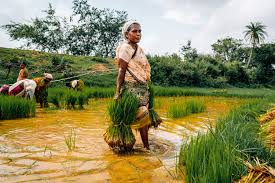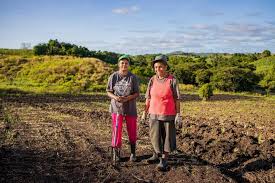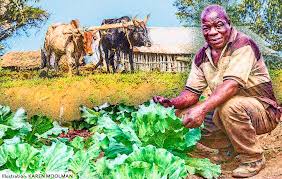In the last two articles, leadership in rural communities was discussed. This article is a continuation of the last two and will bring the course – Introduction to Agricultural Extension and Rural Sociology to a conclusion. After studying this article, the objectives listed below are expected to be achieved.
Read Also: Most Beautiful Flowers: All You Need To Know About
Understanding Leadership in Rural Agricultural Communities

Leadership, in essence, is simply influencing the attitude and actions of one or more persons, leading toward the achievement of some purpose or goal. This is generally accomplished through various ways.
For example, imparting knowledge, giving advice or suggestions, expressing a belief or opinion, making decisions on behalf of groups, providing assistance, exercising power, lending approval or support, also by example or demonstration.
Most leadership positions call for some degree of decision-making and may require power or even authority. All leadership positions require having a real concern for others on the part of the leader, consciously or unconsciously, if one is to really function as a truly effective leader; otherwise, there would be no followers.
Leadership requires followership, based upon service to and support from people.
Most important of all, leadership is more than having been born with favourable characteristics, such as appearance, voice, personality, and ambition.
These characteristics may aid a person in developing leadership ability, but this ability is acquired as a result of training and experience rather than as a result of being born with certain attributes. If people have the desire to lead, they can learn to be leaders. Some will not be as effective as others, even after considerable effort.
Leadership generally arises out of social situations of some kind that happen to call for particular leadership at given times for specific purposes, sometimes even crises; it arises out of the need for leadership.
It is usually based upon some degree of previous accomplishment in the eyes of the group or followers who grant leadership or acquiesce to one assuming it.
Thus, leadership reflects a relationship between people or between a person and group members. It is sometimes earned. It is bestowed, for without having been given permission or support by the people concerned, it does not exist.
A leader is only one who has followers or influence among people, based upon their judgement about his accomplishment, nature, and potentiality, and the needs of the particular leadership job at hand. For a person to merely think he is a leader is not enough.
Nor is it enough for a professional worker to think a person is a leader without adequately considering whether or not he has any followers or leadership relationship with the group or people under concern.
Leadership distribution follows relationships. Research bears out that leaders are generally rather widely distributed and vary in scope of influence according to the group relationships and concerns of the people in given social situations.
Communities themselves, large or small, are networks of relationships or social systems. Within these systems, various types and patterns of leadership usually function and can be identified.
The elitists who conceive of power in terms of domination of the masses by an oligarchy of the few favour the reputational approach of identifying community leaders, while the pluralists who see power as decentralized in a democratic society favour the use of the decisional approach of identifying community leaders. Other approaches are the positional, social participation, and opinion leadership approaches.
People of given population segments, or social systems generally, are best reached through leadership of their own people. However, in many cases, their interest in a given subject and rapport with them may first have to be developed.
Read Also: Bouqs Flowers: All You Need To Know About
Leadership Development and Human Capacity Building in Agriculture

Leadership development is an increase in the involvement of people, an increase in their ability to carry out responsibilities or otherwise function in given leadership roles, and an increase in their own personal growth as a result of their greater participation or involvement.
Always the factor of maturity and growth must be considered by professional workers as they work with people in programmes. Very few leaders start out at the top of a ladder. People grow in leadership through experience and training. One form of growth is advancement in the kind of positions held.
A good technique of leadership development is to provide opportunities for people to serve at the bottom of the ladder in beginning ways or as help on special occasions; in other words, to start them up and see to it that they are given recognition and encouragement. They become a reservoir from which to draw when filling other positions later.
Leaders also grow in their ability to do better in given leadership positions; not all need to be “promoted” for development to take place. People grow in personality development, too, as they have opportunities to function as leaders.
Besides performing a particular task or leadership function, one gains in knowledge, interest, aspiration, and satisfaction.
Thus, leadership development, made possible through expanding opportunities to become involved, is truly human resource development.
Frequently it is best to avoid referring to persons as “leaders,” or using the term “leadership” when working with given persons or groups. One reason for this is that most good leaders prefer to be humble and not known by such a weighty title.
For many, the term implies something they do not think they are or want to be; they prefer to be known by the particular position they are in at a given time, such as president, secretary, committee man or counsellor, rather than as a “leader,” a term which to them tends to imply too much “front,” “authoritative” or “top” position.
Another reason why professional workers avoid overuse of the term “leader” and “leadership” is that such terms may weaken the relationship between a leader and his group, which gives rise to his leadership in the first place.
Functions of Rural Community Leaders in Agricultural Extension and Development
Regardless of their dwindling influence, community leaders perform many functions to promote agricultural extension and rural development, particularly in Nigerian rural communities. Some of the functions are:
1. Education: They take part in training other community residents on how to carry out agricultural extension programmes once they have undergone such training themselves; this increases the volume of teaching carried out in the rural communities.
2. Legitimation: They give approval to rural development programmes introduced into their communities. The approval of the leader is crucial in determining whether many rural development programmes are accepted or rejected by the generality of residents of the community.
3. Planning: They take part in planning extension and other rural development programmes meant for their communities. Community leaders often serve as officials such as chairmen of programme planning committees set up in their communities to plan rural development programmes.
4. Programme Execution: They take an active part in carrying out rural development programmes in their communities. Specifically, they contribute money, landed properties, time, and energy, and attend meetings aimed at facilitating the execution of rural development programmes.
They also organize, supervise, and motivate others to carry out rural development programmes and to contribute their resources to such efforts.
5. Spokesmanship: They represent the community in extra-local meetings. In less important instances, they select other community residents to represent them in meetings outside the community, allowing them to concentrate on pressing local issues.
6. Father-Figure: Community leaders are regarded as the fathers of the communities, especially by outsiders. Many issues concerning the community are therefore referred to the leaders first before attempting to reach other community residents. Some issues are resolved at the top by the leaders.
7. Summoning to Meetings: The leader summons other elders to his house for regular meetings. Village residents are summoned less frequently to deliberate on community issues or meet visitors to the community who might be interested in meeting them.
The leader normally ensures that such a meeting is necessary before calling a general community meeting. Often, another resident is chosen to perform the function of summoning people on behalf of the leader.
Do you have any questions, suggestions, or contributions? If so, please feel free to use the comment box below to share your thoughts. We also encourage you to kindly share this information with others who might benefit from it. Since we can’t reach everyone at once, we truly appreciate your help in spreading the word. Thank you so much for your support and for sharing!

